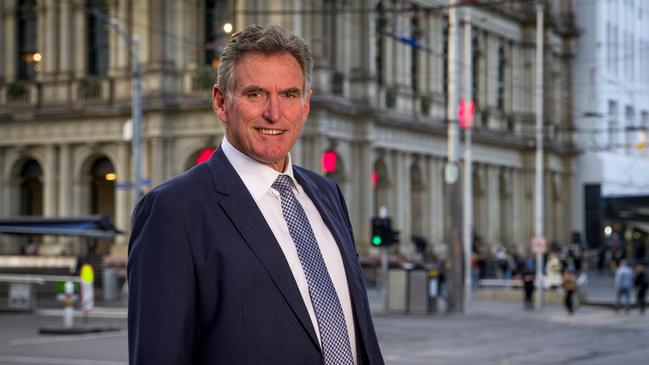Competition in the banking sector is hurting returns, says ANZ’s chief
Banking competition is so ‘fierce’, returns on equity and margins are hurting and it’s a constant war to win home loan customers, Shane Elliott says.
A reduction in banks’ return on equity and margins in recent years shows “mark-ups” from the banking system are coming down as a result of “fierce competition”, according to ANZ chief executive Shayne Elliott.
Speaking about competition in the banking sector, the subject of an ACCC inquiry focused on the deposits market, Mr Elliott told a federal parliamentary committee on Wednesday that competition was so high that it was hurting returns.
“At the moment the return on equity in banking in Australia is barely above the cost of capital – it’s literally half what it used to be,” Mr Elliott said.
Net interest margins – a gauge measuring the difference between what banks pay for money and what they charge – for ANZ fell to 1.75 per cent for its latest half-year result, down from 2.87 per cent in 2000.
“It’s continued to fall pretty consistently over the long term and that is a result of fierce competition,” Mr Elliott said. “This is a war every single day to win home loan customers or other business,” he said.
Banks’ return on equity had halved since before the global financial crisis to about 10 per cent. Competition was hurting returns and further pressure would impact their ability to raise funds, which would hurt borrowers and the broader economy, he said.
“At the end of the day, the banks need to generate a return on equity,” Mr Elliott added.
He resisted calls from the competition regulator, which in 2020 recommended banks regularly prompt customers to review their loans and consider switching to better products.
Asked about support for the measure, he said: “I don’t know that it is for me to ascribe what’s important to somebody’s life. I think they have the ability to call their bank, they are doing so.”
About half of ANZ’s customer base, including new customers approaching it for a loan, had actively engaged with the bank about their loan in the past two years, he said.
Mr Elliott said if regulatory intervention to require the communications triggered more customers switching banks as a result, there were likely to be consequences in pricing.
“We would have to reprice,” he said. “Somebody has to generate revenue for the banks to provide all the services we do that nobody wants to pay for. We can talk about models but there would be implications.”

National Australia Bank chief executive Ross McEwan voiced similar sentiments about competition at the hearing and questioned the need to prompt unengaged customers.
He said borrowers were engaging much more given that 71 per cent of mortgages were coming through brokers that had an obligation to seek the best deals for customers.
Mr McEwan said artificial intelligence would bring a big wave of productivity for the banking sector and could help power bank product comparisons to make it easier for customers to chose suitable products.
NAB was already using AI for fraud detection and in payments, and had plans to use it to help customers use known data on its website to find answers quickly.
“If they can ask a very simple question and it can give them the answer … we have validated … it’s a productivity saving for the customer,” Mr McEwan said.
Technology, including artificial intelligence, and “people brilliance” would create a big wave of productivity in Australia, and the banking industry in particular, he added.
“I do think that artificial intelligence is probably one of the biggest changes that will happen in multiple industries across the world over the next 24 months,” Mr McEwan said.
“Because the power of analysis and the search capability that turns data into something of value to an end customer that they can understand, I think it’s breakthrough material.”
He said any customer information given AI boxes needed to stay within the bank.
“We do also have to be very careful with that,” he said.







To join the conversation, please log in. Don't have an account? Register
Join the conversation, you are commenting as Logout